



«Ya Peshekhod® 2.0»




- Connect the parts of the game field as you want, getting new traffic situations.
The following options are possible:


- Place flat chips of each color on 3 objects, and cone chips on the START field.
- Decide who starts first, second and so on. (see picture below)


HOUSE - the object from which to start the game. (see picture below)


Important:
Use erasable felt-tip pens!
*The object is considered visited when the participant of the game puts the cone chip on the green cell near the object and takes the flat chip of its color. (see picture below)

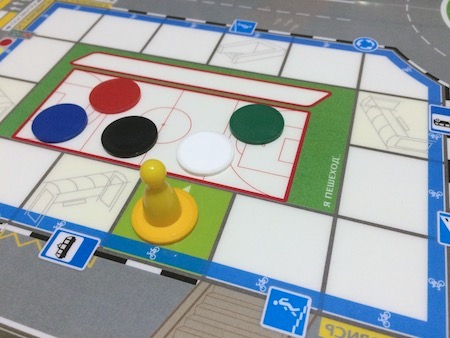
Moving on the playing field is possible with the help of situational dice. In your turn, you can throw all situational dies! During the move, you can move your cone chip to the number of steps dropped on the GREEN die or less, depending on the square on the playing field, on which you want to stop. Having taken a flat chip of its color from the object, it is necessary to bring it to the FINISH field, observing your order, put it in the object HOUSE, and then go for the next one. (see picture below)

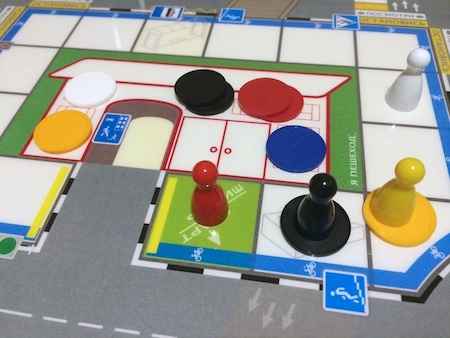

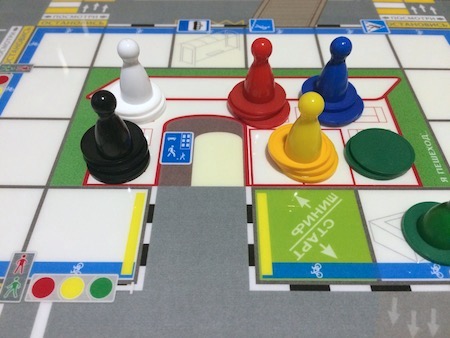
- STEPS. You can move to the specified or smaller number of squares (depending on the game situation).
- A BIKE. You can move to any number of steps on aboveground or underground pedestrian crossing to the object, (see picture below)

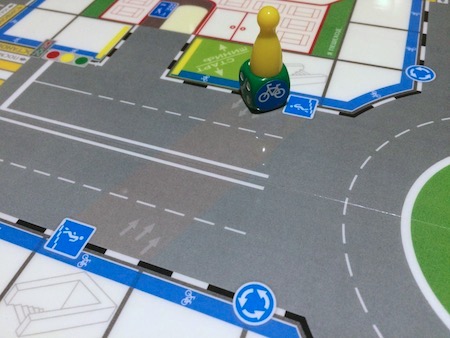

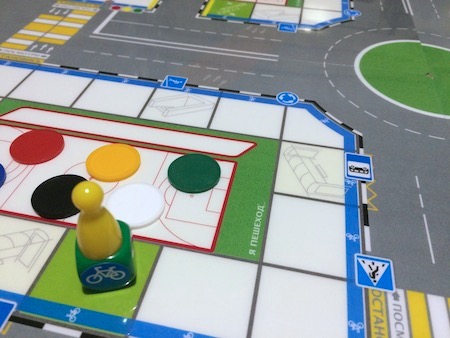
or to a stop or a ground pedestrian crossing.(see picture below)

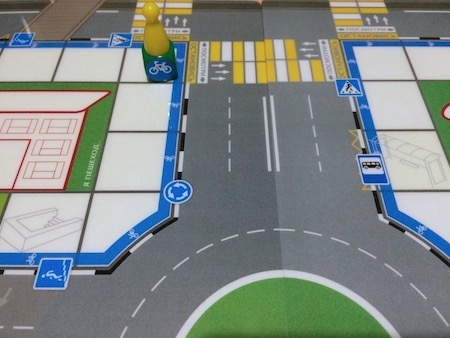


You can not cross a roadway at a pedestrian crossing on a bicycle!
The move ends! (see picture below)

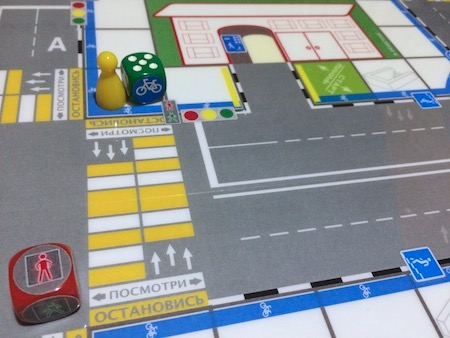
Note: You can cross a road on the aboveground or underground pedestrian crossings when they are connected on different parts of the playing field, that is, the line of the underground passage on one part is connected to the line of the underground passage to the other, and the ladder of the overpass with the ladder on the other part. (see picture below)



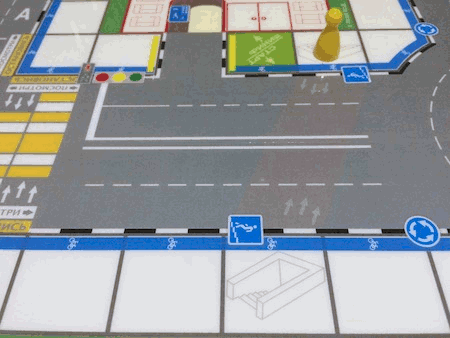
To cross the road near the sign "Residential zone" (in front of the arch) one can only with the next turn (without throwing a die). (see picture below)


BLUE Die (bus and trolleybus stop) or (tram stop) can be go away only when you are at a minicipal transport stop.
The following situations may occur:
- BUS and TROLLEYBUS. You can move to any other bus or trolleybus stop. (see picture below)


- TRAM. You can move to any other tram stop. (see picture below)

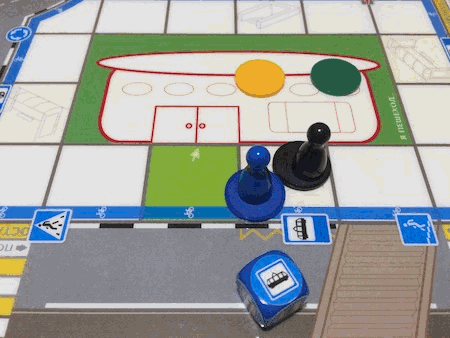
Note: if there are several pedestrians at the stop, they can all move to another stop, according to the traffic sign falling on the die. (If TAXI, they can all move to another stop)
The YELLOW die (PEDESTRIAN CROSSING) is when you intend to cross the roadway on the ground pedestrian crossing (without the traffic light).

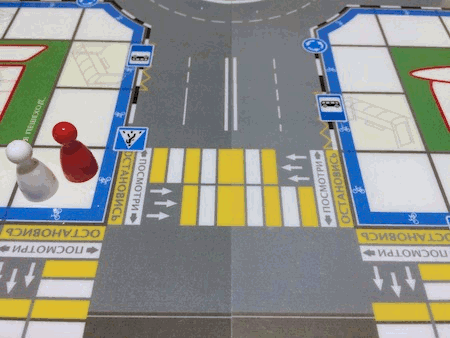
The following situations may be encountered:
- An aboveground pedestrian crossing is free. You can go. (see picture below)

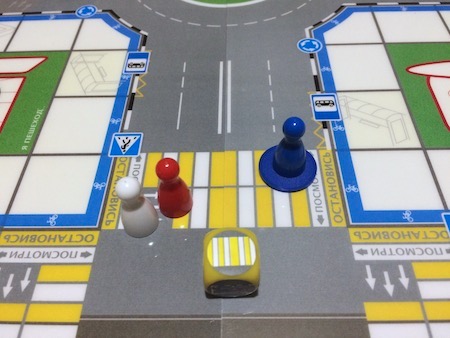
- The pedestrian crossing is not blocked by the inspector (stands to you sideways). You can go. (see picture below)

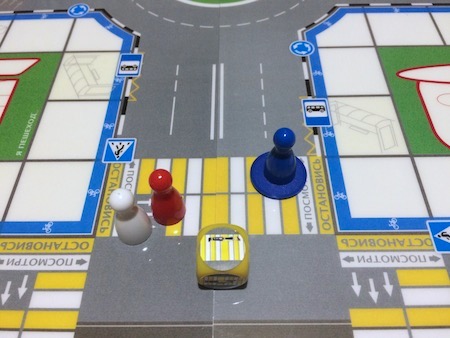
- An above-ground pedestrian crossing is blocked by the inspector (hands to the sides). You can not go. Skipping the turn. (see picture below)

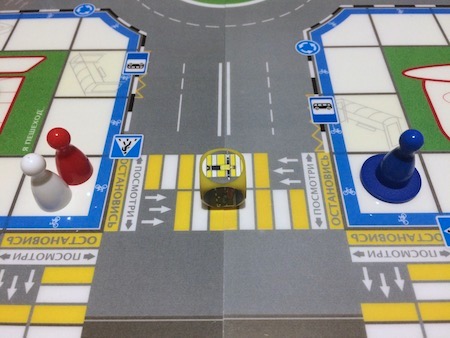
- The inspector's hand is up (signal change). You can not go. Roll the die again. (see picture below)

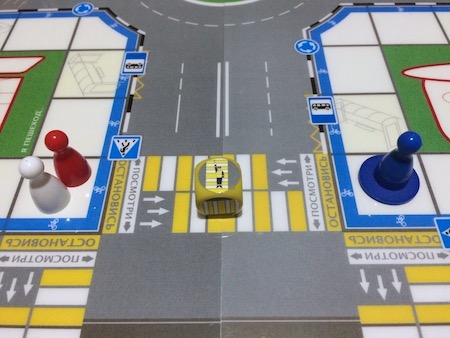
- Traffic is moving along the roadway. You can not go. Skipping the turn. (see picture below)

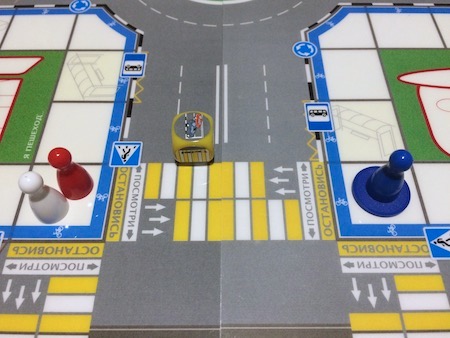
- Traffic stopped to let a pedestrian pass. You can go.
(Note: if there are several chips in front of the ground pedestrian crossing, then they all go to the opposite side, when at least one of the participants of the game, the situation on the cube allowing the passage through the carriageway to the other side of the road). (see picture below)

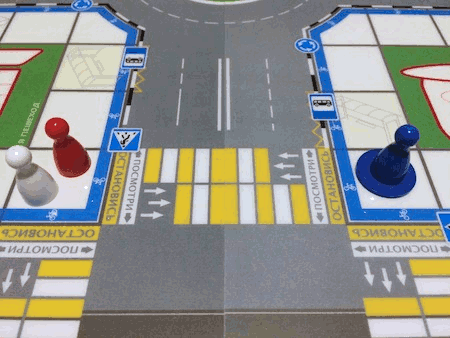
RED die (TRAFFIC LIGHT SIGNALS) is when you intend to cross the roadway to the other side by traffic light signals.
The following situations are encountered:
- Red traffic light for a pedestrian. You can not go. (see picture below)


- Yellow traffic light. Cast the die again.
- Green light signal for a pedestrian. You can go. (see picture below)

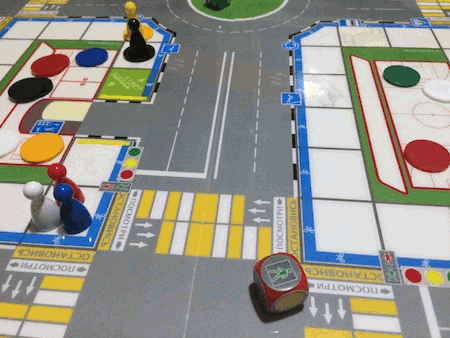


Instead of dices, you can use situational cards from other versions of this game. (see picture below)

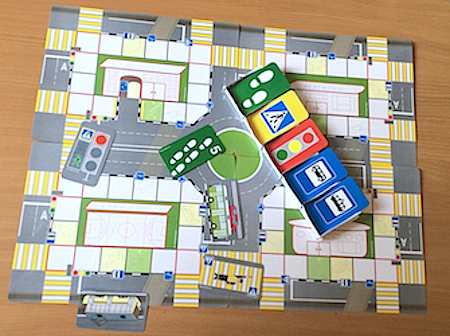
You can also play on the big version of the game, where children themselves can move instead of chips themselves on the playing field, observing the rules of the road. (see picture below)






 To the top of the page
To the top of the page